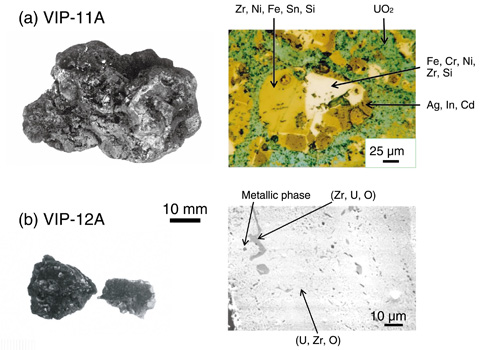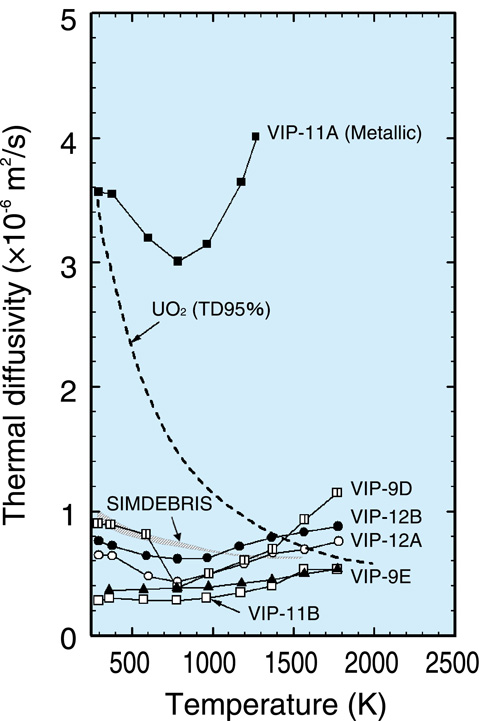
Fig.1-37 Molten fuels from Three Mile Island Unit 2

Fig.1-38 Temperature dependence of the thermal diffusivity of debris
During the accident at the TEPCO’s Fukushima Daiichi NPS (1F), the reactor cores reached very high temperatures and the fuels were molten, resulting in a severe accident. Decommissioning of the power stations, including removal of the molten fuels (debris) is underway. Information on the properties of the debris is important for analyzing the progress of the accident, estimating the status inside the damaged reactors, and developing a plan for debris removal.
The most extensive examinations and analyses were conducted on debris sampled from the reactor core of Three Mile Island Unit 2 (TMI-2) after the accident in 1979. We obtained approximately 60 pieces of TMI-2 debris and conducted appearance observation, density measurement, microstructure observation and chemical analysis. In addition, thermal properties, including the thermal expansion, specific heat capacity, thermal diffusivity, and melting temperature, were measured. Simulated debris that had a similar chemical composition to that of the TMI-2 debris was also used in the measurements.
Fig.1-37 shows the appearance and microstructure of two typical types of debris. The VIP-11A has relatively larger amounts of metallic components, whereas the VIP-12A debris is ceramic debris that mainly consists of uranium and zirconium oxides. Fig.1-38 shows the temperature dependence of the thermal diffusivity of the TMI-2 debris and simulated debris. The thermal diffusivities of the ceramic debris and the simulated debris (SIMDEBRIS) were lower than that of UO2 below 1500 K; however, that of the metal-rich VIP-11A was not. The presence of zirconium oxides with lower diffusivities and pores that tend to decrease the diffusivity is probably the main cause of the obvious difference between the TMI-2 debris and UO2.
It was also shown that the melting temperature of the simulated debris was about 2840 K and that other core materials such as iron, chromium, nickel, and silver have very little influence on the melting temperature.
We are conducting various experiments to study the behavior of the fuels under accident conditions and analyses to simulate the accidents in order to support safe and efficient progress in the decommissioning of 1F.